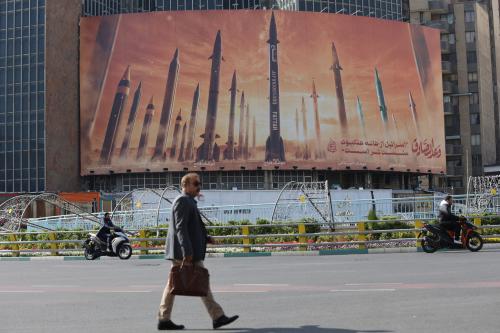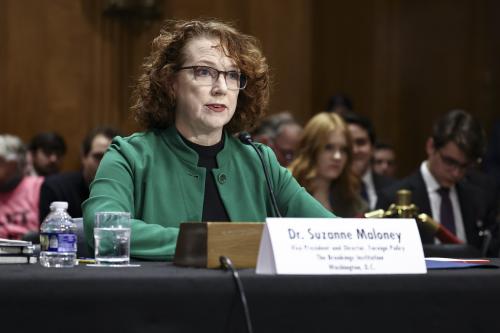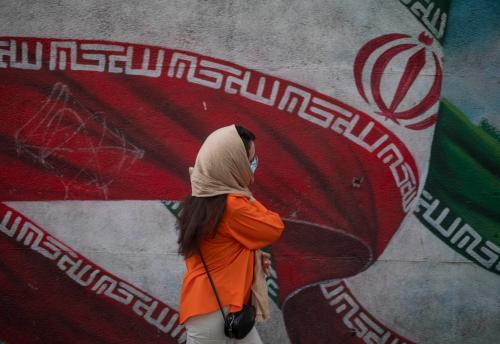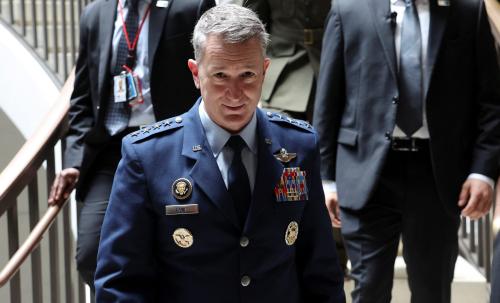The death of Iranian President Ebrahim Raisi in a helicopter crash has dealt a major shock to Iran’s Islamic Republic at a precarious moment for the sclerotic clerical state and the broader Middle East. Although Raisi was not Iran’s ultimate authority, he was the paragon of the regime’s bureaucratization of brutality. His demise will reshape the looming succession process for Iran’s geriatric leadership and reverberate across a region beset by violence that Tehran has fueled.
The Islamic Republic has weathered monumental challenges since its establishment after the 1979 revolution that ousted the monarchy, including many that have imposed massive costs on the regime but failed to dislodge or durably weaken it. Still, that same history may elevate the leadership’s deeply ingrained paranoia, especially coming only weeks after a historic escalation in its “shadow war” with Israel. For a ruling system that prioritizes nothing over its own survival, the loss of a favored son will stoke a sense of threat and potentially precipitate a backlash against its citizens and its neighbors. Raisi’s death raises the temperature in an already combustible region and adds a new wild card to the Biden administration’s delicate diplomatic choreography between Saudi Arabia and Israel as it is nearing its culmination.
Raisi’s death amid regime transition
The crash occurred as the president’s delegation was returning to Iran after inaugurating a dam on Iran’s border with Azerbaijan along with that country’s president. In addition to Raisi, the helicopter was carrying Foreign Minister Hossein Amirabdollahian, a diplomat with extensive ties to Tehran’s security bureaucracy who had played a central role in shaping Iran’s expanding influence across the broader Middle East.
As president, Raisi sat near the apex of power in Iran’s unique ruling system and exerted considerable influence on the country’s politics, society, economy, and external relations. His untimely death elevates first Vice President Mohammad Mokhber, former head of a massive state enterprise controlled by the Supreme Leader, to assume the president’s responsibilities. It will also precipitate new elections in 50 days, requiring unusually hasty improvisation by a regime that has become increasingly ossified and unpopular as it approaches its half-century mark.
This scenario poses real risks for a regime that had sought to engineer its transition from the original revolutionary generation to its uninspiring heirs. While the raucous contestation among the theocracy’s mandarins has been settled in favor of hardliners, infighting among the conservative camp remains intense and will escalate around new opportunities to seize the advantage.
Add to this challenge that Iran’s beleaguered representative institutions command little interest or respect from its citizenry, as evidenced by the record low turnout in recent parliamentary elections. Instead, Iranians have turned to the streets and the internet to express their political aspirations. An unexpected political opening may spark new activism against the regime, as highlighted by the scenes of Iranians celebrating the news of the crash that have begun to leak onto social media.
Even more momentously, the president’s demise upends years of politicking and careful orchestration in preparation for the eventual passing of Iran’s ultimate authority, the 85-year-old supreme leader, Ayatollah Ali Khamenei. Since he took the helm of the Islamic Republic in 1989 after the death of Ayatollah Ruhollah Khomeini, the revolutionary state’s charismatic founder, Khamenei has consolidated power under the auspices of his office and endorsed an aggressive approach to power projection that has vastly expanded Iran’s regional sway. Sustaining that internal dominance and external ascendancy will test whoever comes next.
Unsurprisingly, Iran’s repressive regime has not produced a surfeit of highly qualified contenders for unaccountable leadership. The generation that prevailed in the 1979 revolution is quickly aging out and as the theocracy’s political elite has narrowed and hardened, the pool of prospective candidates who are willing and capable of imposing orthodoxy on an increasingly young and secularized population has shrunk considerably.
Over recent years, Raisi had emerged as one of the leading candidates to assume the position of supreme leader after Khamenei passes from the scene. A dour cleric, Raisi’s primary credentials appeared to be his ruthlessness—in 1988, he was one of several judges who sent thousands of political prisoners to their deaths after sham trials—and his family connections to the powerful wing of Iran’s religious establishment based in Mashhad.
Aside from Raisi, the most prominent contender for the next supreme leader is Khamenei’s son, Mojtaba, who has wielded considerable informal power behind the scenes and has built deep relationships with the Revolutionary Guard Corps and other components of the security services. His name is frequently invoked by Iranians as a likely successor to his father, but many also question his qualifications based on a lack of leadership experience, limited religious credentials, and decades of regime rhetoric denouncing hereditary leadership.
Formally, the succession process is managed by a clerical body whose members are determined by Iran’s heavily stage-managed elections; in practice, campaigning has been underway for years, as has a planning process authorized by the current supreme leader. One of the three members of the committee empowered to assess prospective contenders was none other than Raisi himself.
Conspiracies and consequences
The crash was likely caused by mundane factors—scenes of the rescue efforts showed inclement weather and dense fog. And for years, Iranians have complained that U.S. and international sanctions left the country vulnerable to dangerous aviation issues as a result of aging or poorly maintained equipment—a grievance that Iranian officials resurfaced in the wake of the crash.
Still, the high stakes will only fuel the conspiracy theories that were percolating from the earliest reports of helicopter troubles. Such suspicions draw from a deep well of experience with internal violence and external sabotage. During the revolution’s early years, competition between the revolutionary coalition’s divergent components precipitated a vicious power struggle and acts of terror that killed—among others—a number of influential clerics, cabinet ministers, members of parliament, the president, and the prime minister. Khamenei himself lost the use of his right hand as a result of a 1981 assassination attempt.
The regime fought back with a campaign to kill its critics both within and outside Iran as well as enduring efforts to target dissidents in the United States, Europe, and beyond. In 1996, Iran’s security services attempted to kill 21 writers by disabling their bus in the mountains of northwestern Iran, not far from where Raisi’s helicopter crashed—an episode that was later made into a film whose director fled the country only last week on foot to avoid prosecution for his art.
That history may predispose many among Iran’s leadership and population to cynical interpretations of the crash. And coming little more than a month since Iranian authorities undertook an unprecedented attack on Israel—launching more than 300 drones and cruise and ballistic missiles at the Jewish state in response to an Israeli strike that killed senior Iranian military officials in Damascus—many may see this as a deferred reprisal by Israel. Israel has demonstrated extraordinary success in undertaking deadly operations within Iranian territory, including a string of assassinations of Iranian nuclear scientists.
Ultimately, however, the conspiracy theories are almost certainly off the mark. Raisi’s fiery demise on the side of a fog-covered mountain represents merely the latest chapter in the Islamic Republic’s 45-year litany of miscalculations. As ordinary Iranians—and their neighbors across the Middle East—know all too well, Tehran’s strategic blunders often have catastrophic consequences.
The Brookings Institution is committed to quality, independence, and impact.
We are supported by a diverse array of funders. In line with our values and policies, each Brookings publication represents the sole views of its author(s).








Commentary
Will Raisi’s death destabilize Iran?
May 20, 2024